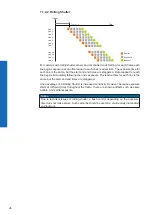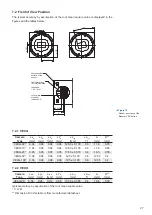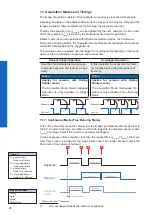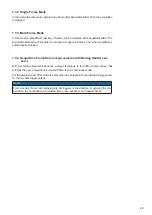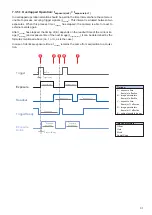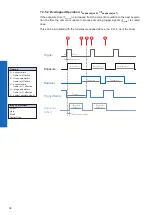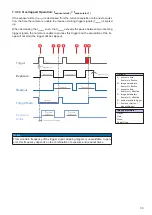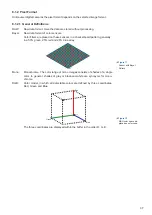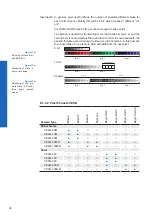
40
8.1.3 Exposure Time
On exposure of the sensor, the inclination of photons produces a charge separation on
the semiconductors of the pixels. This results in a voltage difference, which is used for
signal extraction.
The signal strength is influenced by the incoming amount of photons. It can be increased
by increasing the exposure time (t
exposure
).
Notice
Due to the sensor, fixed pattern noise effects can occur at high exposure times. You
can counteract this by setting the gain to a value of approximately 1.5 and reducing the
exposure time accordingly.
On Baumer VEX cameras, the exposure time can be set within the following ranges (step
size 1μsec):
8.1.3.1 VEXG
Camera Type
t
exposure
min
t
exposure
max
Monochrome
VEXG-02M
40 μsec
1 sec
VEXG-13M
40 μsec
1 sec
VEXG-25M
40 μsec
1 sec
VEXG-52M.R
20 μsec
1 sec
VEXG-100M.R
48 μsec
1 sec
Color
VEXG-02C
40 μsec
1 sec
VEXG-13C
40 μsec
1 sec
VEXG-25C
40 μsec
1 sec
VEXG-52C.R
20 μsec
1 sec
VEXG-100C.R
48 μsec
1 sec
8.1.3.2 VEXU
Camera Type
t
exposure
min
t
exposure
max
Monochrome
VEXU-24M
57 μsec
60 sec
Color
VEXU-24C
57 μsec
60 sec
Figure 16 ►
Incidence of light
causes charge separa-
tion on the semiconduc-
tors of the sensor.
Notice
Only for cameras
with rolling shutter
sensors!
The modification of
the Exposure Time is
done by reconfigura
-
tion of the sensor.
If the modification oc
-
curs during a sensor
readout, the update
will be delayed until
the end of the current
readout.
Содержание VEXG
Страница 2: ...2 ...
Страница 39: ...39 8 1 2 3 Pixel Formats VEXU Camera Type Mono8 Mono12 Bayer RG8 Bayer RG12 Monochrome VEXU 24M Color VEXU 24C ...
Страница 67: ...67 ...

